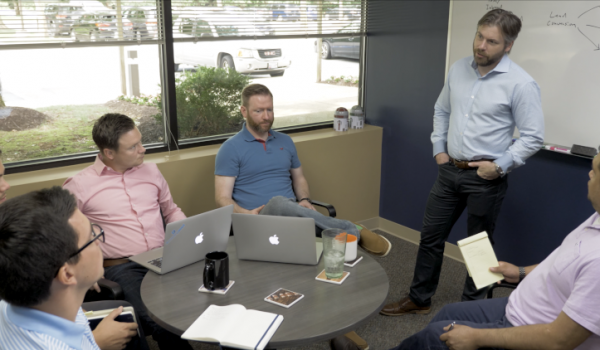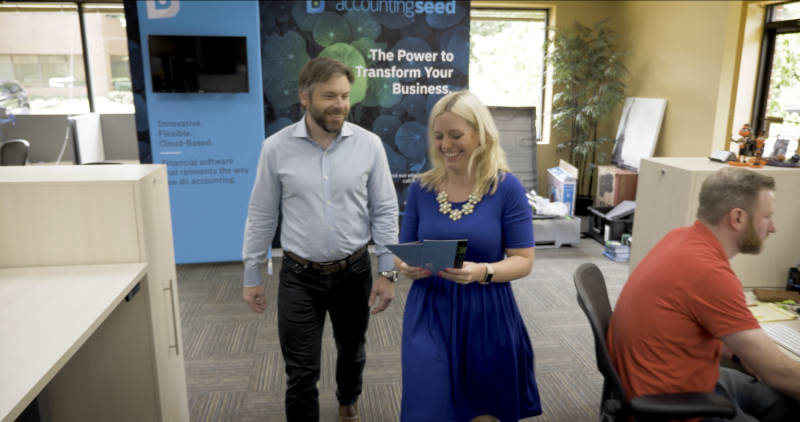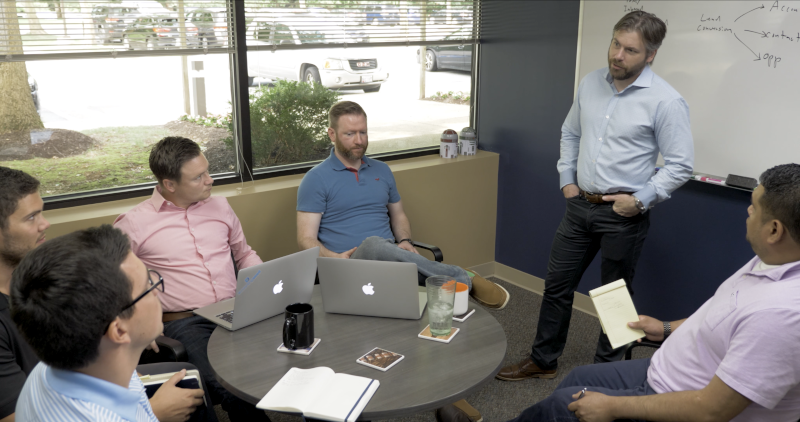
Author: Tony Zorc, CEO & Founder of Accounting Seed
Planning to start your own tech company? Being the leader of any business entails a lot of responsibility, and though you may have a specific concentration, you inevitably become a jack-of-all-trades.
Being a tech entrepreneur is certainly busy, but also very rewarding. One thing that helps me conduct business successfully, is carefully structuring my day for maximum efficiency. Let’s take a look at an average day in my life:
5:20 a.m.: Wake Up
- Travel to the gym.
- I start my day pretty early so I can get as much done as possible. The first thing I do, which is very important, is exercise.
6 a.m.: Crossfit
- I’ve been doing Crossfit for 5 years; typically I go about 4-5 times a week as a part of my routine. Having a standard exercise regimen is valuable on many different levels. For one thing, it keeps me physically healthy and is fun. However, Crossfit also helps me focus and remain accountable to my daily goals. Getting my energy up also prepares me to maximize productivity and accomplish the business priorities for the day.
- Travel back home.
7 a.m.: Groom & Travel
- Back to the house to groom.
- Travel to office.

8 a.m.: Arrive at the office and prep for the day
- As soon as I get to the office and settle in, I work on clearing my email. These range from technical questions from staff to high priority correspondence. It’s easy to get overwhelmed with email, so I factor in time early in the day to address these messages and make sure top priorities are dealt with.
- I’ll also take the opportunity to say hello to any staff in the breakroom and thank people who have done great things lately. Small things like this are critical for morale and building a warm, collaborative work environment. Your staff is essential, treat them right!
9 a.m.: Marketing Events Review
- Next, I’ll be reviewing the tradeshow schedule with my marketing program manager to go over some events we’re considering attending this year. We’ll also decide on whether to commit to an additional trade show for Q3, staying ahead to ensure efficient planning.
9:30 a.m.: Marketing Content Review
- I’ll also be reviewing our marketing content production to discuss strategies for addressing key targets and audiences to promote our product.
- During this time, I’ll work with our marketing director to solidify the marketing plan for the next quarter and also check out some custom sock designs. It’s always good to have marketing swag to give out at events.

10 a.m.: Sales Team Review
- Our business development team generates leads and grows the business through sales. My next task is to go over their results from last week to see where they’re at in respect to goals and performance. This helps us remain on track and develop strategies for improvement.
- Part of our session will examine the sales pipeline. Our goal is to outperform last year. As a part of achieving this milestone, I want to drill into the pipeline to make sure we are meeting our 30% growth goal for Q2.
- We’re also onboarding a new sales engineer. I’ll be discussing the initial goals we’ve set for him in the 8-week onboarding process. Looks like he’s on track!
11 a.m.: Customer Success
- Customer success is very important to ensure customers are using your software successfully and are getting true value out of the product.
- To keep these initiatives moving forward, I review the adoption process regularly with my chief operations officer.
- Adoption is on track with the 12 milestones we track for on-boarding to ensure a smooth process. There are only a few customers that are slipping behind schedule, so we’ll also figure out how to help any stuck customers finish their onboarding journey.
11:37 a.m.: Tier 1 Support
- Customer support and service are essential components of Accounting Seed’s brand. Therefore, I’ll rendezvous with Tier 1 Support for an update. I’m excited to get the news that customer satisfaction is at 90%.
- Case volume is high this week with questions on an upgrade that we automatically pushed over the weekend. It’s essential that I take time to address questions or logistics with the team to prepare them effectively.
12:05 p.m.: Tier 3 Support
- Next, I’ll be giving input to one of my Tier 3 support staff for replicating a problem users are having. We’ll discuss how the functionality should work in order to provide adequate solutions for our customers.
1 p.m.: Product Consulting
- Here, I conduct a Q&A session with our product consulting team on new features coming out in the next release. This ensures that they will be fully aware of new functionality in order to better assist with sales and customer questions.
- I’ll also get feedback on current issues customers are facing in implementation. This will help us construct ways to mitigate these issues and prepare for other problems that could occur.
2 p.m.: Product Training Review
- I’ll then review product training material created in our Accounting Seed University for accuracy.
- Providing helpful, useful resources for our customers is very important because it helps them use and make the most out of our technology.
- We’re always producing new material to make sure customers continue gaining value out of our product. Enriching the customer’s experience is essential for maintaining customer loyalty, and setting your software apart from the competition.

2:32 p.m.: Product Design
- Next, is one of my favorite parts of the day: planning product designs to continue developing the software. Today, I’ll review requirements for making Accounting Seed compliant with new, local digital tax compliance laws in the United Kingdom.
3 p.m.: Development
- After that, I’ll meet with our chief technology officer to clarify requirements on new features we’re currently coding and cover any questions the development team has.
3:30 p.m.: Facilities
- I’ll then take time to address issues with the workspace to make sure my staff is comfortable. I’m investigating why the thermostat is dead for the third time in three weeks.
- At this time, I’ll approve computer and equipment purchases for two new employees.
4 p.m.: Human Resources
- We are trying to fill several open positions, so I’ll catch up with our HR manager to go over the status of applicants with each position.
- We’ll also discuss employee recognition rewards for the company Q2 meeting.
5 p.m.: Accounting
- Finally, I get to my own accounting, when I review collections with our accountant. I’ll check the status of collections and go over the cash flow projections for the month.
- This is actually mission-critical to helping me lead the company effectively. This lets me assess where we are in achieving key goals and strategize on how to utilize our resources for return on investment.
- For example, if our projected cash flow is positive through quarter-end, I can redirect more cash to continue growing the business.

6 p.m.: I head home for dinner with the family
- After working hard, you need to recharge. I make sure to cut myself off from the office for the day to be with my family for a meal.
7 p.m.: My wife and I take Milkshake (our dog) for a walk.
- In addition to some creature comforts, courtesy of Milkshake, I’ll catch up with my wife on the day.
- Later, I’ll check my email one more time to get back to anyone I might have missed.
8 p.m.: Relax
- At this point, I’ll relax for an hour, have a drink with my wife, and maybe discuss any family logistics.
9 p.m.: Head to bed
- Yes, I go to bed pretty early. Remember, I get up at 5:20 a.m.

Set Your Own Routine
Being a tech leader involves a lot of cross-functional management of the various dimensions of the business. But you don’t have to do that alone, nor should you. Surround yourself with reliable, talented staff and your schedule will be significantly easier to manage
Whether you’re trying to improve your own productivity or are just developing your schedule as a tech entrepreneur, I recommend developing a structured routine. Consider optimizing your day to focus on consistency and prioritization. Take your essential needs, business and personal, and dedicate a specific time to each. You won’t believe how much you can accomplish.
See Accounting Seed in action
Get a close-up view of how accounting on Salesforce can eliminate the need for costly integrations—and silos of mismatched information—by sharing the same database as your CRM.


